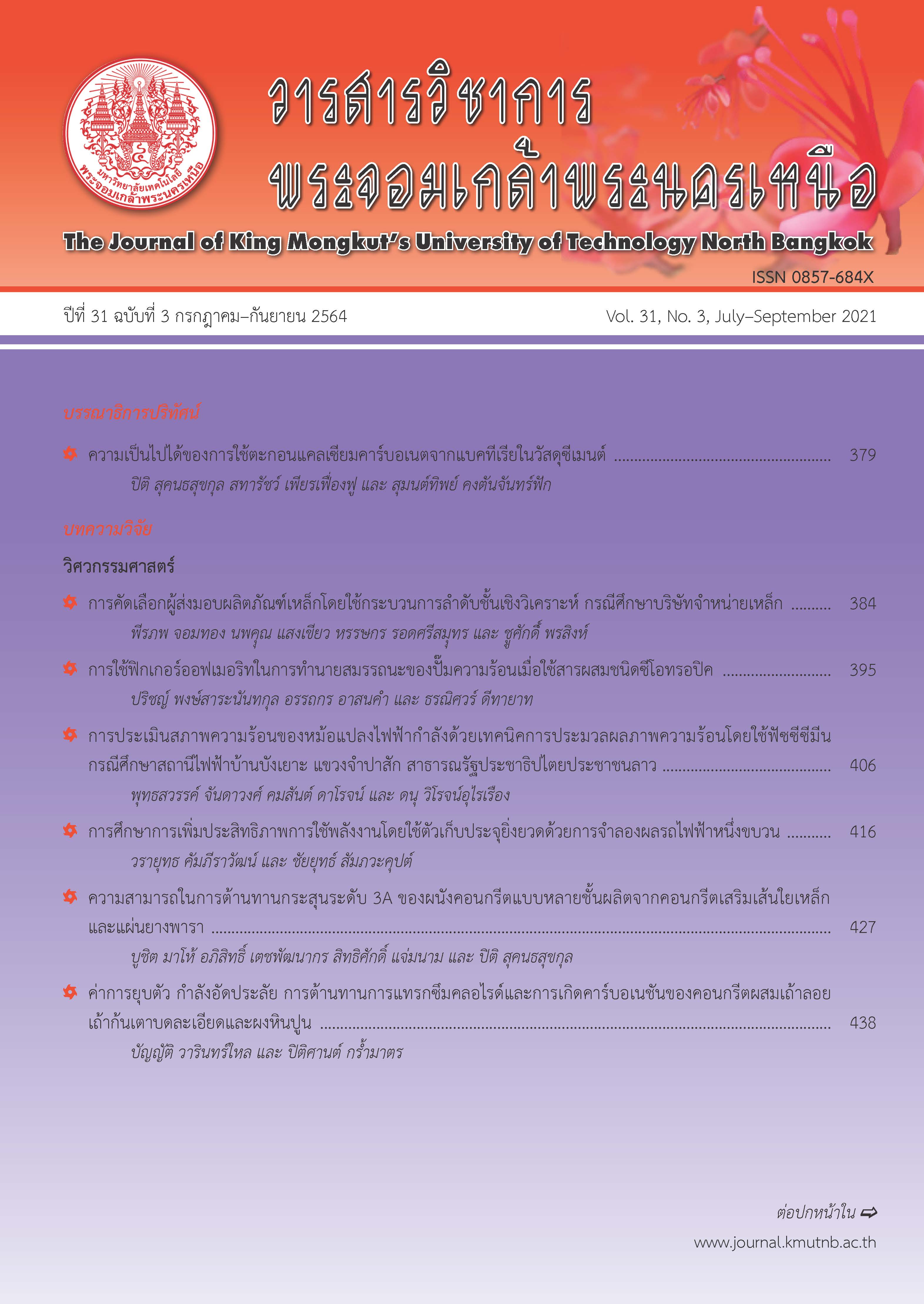Blasting Behavior of Pipe Bomb and a Risk Evaluation Approach
Main Article Content
Abstract
This research studied the blasting behavior in pipe bombs. Damage levels on the concrete slabs and the fragment-received panel resulted from the explosions were measured and compared. In this study, the damage levels were affected by two designated variables—mass of explosive material and volume of the steel pipe. By changing these variables, measurements were conducted on six different cases of explosion—TNT-1/4lb (no pipe), TNT-1/4lb (small pipe), TNT-1/2lb (small pipe), TNT-1lb (medium pipe), TNT-1/4lb (medium pipe), and TNT-1/4lb (large pipe). As results, the blasted pressure of the TNT-1/4lb (small pipe) case was 40% of that of the TNT-1/4lb (no pipe) case. However, the damage on concrete slabs were more severe in the TNT-1/4lb (small pipe) case than in the TNT-1/4lb (no pipe) case. Results found that damage on concrete slabs increased when the mass of explosive material was increased. Also, damages on concrete slabs remained nearly identical when the volume of steel pipe was increased. As for the blasted fragment measurement, when the mass of explosive material was increased, the number of fragments also increased while the fragment sizes decreased. In addition, increasing the pipe volume showed no effect on the number and size of fragments. A simple risk evaluation indicated that the blasted fragments could do more damage, and thus were more dangerous, than the blasted pressure.
Article Details
The articles published are the opinion of the author only. The author is responsible for any legal consequences. That may arise from that article.
References
[2] Prince of Songkla University (2020, March). Deep South Watch. [Online]. Available: https://deepsouthwatch.org/th/dsid (in Thai)
[3] Royal Thai Police Bomb Data Center (2015, August). Activities of Office of Forensic Science. [Online]. Available: http://thaibdc.forensic.police.go.th/?p=523 (in Thai)
[4] G. Tanapornraweekit and S. Tangtermsirikul, “Lethal area from blast and fragment of pipe bomb,” Thai Journal of Science and Technology, vol. 24, no. 3, pp. 514–524, 2016 (in Thai).
[5] Handbook for Blasting Calculation and Blast Effect on Building Structure, Department of Public Works and Town & Country Planning, Bangkok, Thailand, 2016, pp. 3–8, a–4 (in Thai).
[6] A manual for the prediction of blast and fragment loadings on structures, U.S. Department of Energy, 1981, pp. 6–1.
[7] A. Malhotra, D. Carson, and S. M. Fadden, “Blast pressure leakage into building and effect on humans,” Procedia Engineering, vol. 210, pp. 386–392, 2017.
[8] Federation of American Scientists, Military Analysis Network (1998, January). Damage Criterial. [Online] Available: https://fas.org/man/dod-101/navy/docs/es310/dam_crit/dam_crit.html
[9] J.C. Oxley, J.L. Smith, E.T. Bernier , F. Sandstrom, G.G. Weiss, G.W. Recht, and D. Schatzer, “Characterizing the performance of pipe bombs,” Journal of Forensic Sciences, vol. 63, no. 1, pp. 86–101, 2018.
[10] M. D. Hutchinson, “With-fracture gurney model to estimate both fragment and blast impulses,” Central European Journal of Energetic Materials, vol. 7 no. 2, pp. 175–186, 2010.
[11] E. M. Fisher, The Effect of the Steel Case on the Air Blast from High Explosive. Defense Technical Information Center., 1953.
[12] V. Karlos and G. Solomos, Calculation of Blast Loads for Application to Structural Components. Italy: Publications Office of the European Union, 2013, pp. 22.
[13] R. W. Gurney, The initial velocities of fragments from bombs, shell and grenades, Ballistic Research Laboratories (BRL), 1943.
[14] International Ammunition Technical Guideline (IATG), United Nations Office for Disarmament Affairs (UNODA). New York, USA, 2015, pp. 10.
[15] Structure to Resist the Effects of Accidental Explosions (UFC 3-340-02). U.S. Department of Defense, 2008, pp. 2–294.

